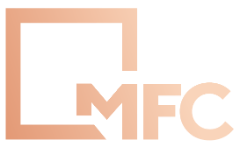MFC offers a complete and fully supported integration solution for hardware such as sensors, data loggers, probes, beacons and a huge range of devices. This is collectively knows as the Internet of Things, or IoT.
The IoT world is large and diverse, leading the Industry 4.0 movement.
Unlock your IoT data and accelerate business growth.
MFC integrates with the AWS Internet of Things (IoT) services and solutions to connect and manage billions of devices. Collect, store, and analyze IoT data for industrial, consumer, commercial, and automotive workloads.
Accelerate innovation with the most complete set of IoT services
Scale, move quickly, and save money. From secure device connectivity to management, storage, and analytics, MFC IoT has the broad and deep services you need to build complete solutions.
Secure your IoT applications from the cloud to the edge.
MFC IoT services address every layer of your application and device security.
Safeguard your device data with preventative mechanisms, like encryption and access control, and consistently audit and monitor your configurations with AWS IoT Device Defender.
Build intelligent IoT solutions with superior AI and ML integration
Scale easily and reliably
Build innovative, differentiated solutions on secure, proven, and elastic cloud infrastructure that scales to billions of devices and trillions of messages.
The IoT Core for LoRaWAN is a fully managed LoRaWAN Network Server (LNS) that enables customers to connect wireless devices that use the LoRaWAN protocol for low-power, long-range wide area network connectivity with the MFC Platform.
Using MFC IoT Core, customers can now set up a private LoRaWAN network by connecting their LoRaWAN devices and gateways to the MFC Platform —without the need to develop, maintain, or operate their own LoRaWAN Network Server.
Benefits
Eliminate the need to develop or operate an LNS
MFC Platform IoT Core for LoRaWAN eliminates the undifferentiated development work and operational burden required to set up and manage an LNS and associated infrastructure. MFC Platform IoT Core for LoRaWAN manages your device and gateway connections to the cloud, accelerating the network set-up time.
Reduce gateway and device onboarding friction
MFC Platform IoT Core for LoRaWAN supports open-source gateway-LNS protocol software called LoRa Basics Station which simplifies gateway management at scale. The IoT Core for LoRaWAN gateway qualification program enables customers to source pre-tested LoRaWAN gateways and developer kits that meet the required LoRa Basics Station specification. Customers can also buy any off-the-shelf sensor or actuator compliant with LoRaWAN specification 1.0.x or 1.1 and connect it to MFC Platform IoT Core without any requirement to modify embedded software. This creates a plug-and-play experience that reduces the device on-boarding friction.
Accelerate IoT application development
MFC Platform IoT Core for LoRaWAN has built-in integration with MFC Platform IoT Core Rules Engine so device data (uplink) is automatically routed and transformed according to preset rules. This streamlines the process for application developers to translate proprietary LoRaWAN binary messages, so device data can be more easily integrated with cloud services. IoT Core for LoRaWAN also enables you to send application messages to your devices (downlink) using APIs. It also reduces the need to provide technical assistance to internal teams building applications on top of IoT Core for LoRaWAN.
Capabilities
LoRaWAN gateway connectivity
Gateways serve as a bridge and carry LoRaWAN device data to and from a network server, usually over high-bandwidth networks like Wi-fi, Ethernet, or Cellular. The LoRa Basics Station—an open-source software maintained by Semtech Corporation and distributed via their GitHub repository—running on your gateway is a prerequisite for connecting your gateway to MFC Platform IoT Core for LoRaWAN. MFC Platform IoT Core for LoRaWAN supports LoRa Basics Station version 2.0.4 and above. LoRa Basics™ Station contains two sub protocols for connecting gateways to network servers, LoRaWAN Network Server (LNS) and Configuration and Update Server (CUPS) protocols. The LNS protocol establishes a data connection between a LoRa Basics Station compatible gateway and a network server. LoRa uplink and downlink messages are exchanged through this data connection. The CUPS protocol enables remote configuration and firmware update of gateways. MFC Platform IoT Core for LoRaWAN provides both LNS and CUPS endpoints for LoRaWAN data ingestion and remote gateway management respectively.
LoRaWAN device connectivity
MFC Platform IoT Core for LoRaWAN supports all devices that comply to the 1.0.x or 1.1 LoRaWAN specifications standardized by LoRa Alliance. Before a LoRaWAN device can start sending data to a network server, a process called activation or join procedure is required. IoT Core for LoRaWAN supports both of the approved ways of device activation as specified by LoRa Alliance: OTAA (Over the air activation) and ABP (Activation by personalization).
LoRaWAN devices can send uplink (device-to-cloud) messages at any time. However, listening for downlinks (cloud-to-device) messages can consume battery capacity and reduce a battery’s lifetime. To support a variety of application requirements with different trade-offs between listening behavior and battery consumption, the LoRaWAN protocol supports three classes of devices (A, B, C). IoT Core for LoRaWAN supports all the three classes. Lastly, IoT Core for LoRaWAN also supports device profiles so that you can define device data rates, channels, and other settings which will be used when the IoT Core for LoRaWAN network server communicates with the device.
LoRaWAN gateway and device monitoring
MFC Platform IoT Core for LoRaWAN provides you visibility into your network health with device and gateway metrics, and enables you to troubleshoot connectivity issues with your devices and gateways. You can query gateway connection status, device status, and receive LoRaWAN network metadata with uplink messages. The metadata included in the device uplink provides network attributes including data rate, frequency, spreading factor, and frame counter of each received message. The metadata also includes the signal strength and signal to noise ratio of the message as received by the gateway through which the device routes the message. When MFC Platform IoT logging is enabled, MFC Platform IoT Core for LoRaWAN sends events about your devices and gateways to CloudWatch Logs. This enables you to troubleshoot issues related to device or gateway provisioning, as well as uplink or downlink events.
Supported frequency bands
MFC Platform IoT Core for LoRaWAN customers can use US902-928, EU863-870, AS923-1 or AU915 frequency bands to connect LoRaWAN gateways and devices that are physically present in countries that support the frequency ranges and characteristics of these respective bands. US902-928 and EU863-870 bands are commonly used in the North America and European regions respectively. AS923-1 is commonly used in Australia, New Zealand, Japan, Singapore, and Taiwan among other countries. AU915 is commonly used in Argentina, Chile, and other South American countries. The LoRa Alliance publishes the LoRa Alliance Regional Parameters to help companies decide which frequency bands to use in their region or country. The frequency band implementation for MFC Platform IoT Core for LoRaWAN follows the recommendations in this regional parameters specification document. These regional parameters are grouped into a set of radio parameters along with a frequency allocation that is adapted to the Industrial, Scientific, and Medical (ISM) Band. We recommend customers work with their compliance teams or consult with local regulatory bodies to ensure they meet any applicable regulatory requirements.


